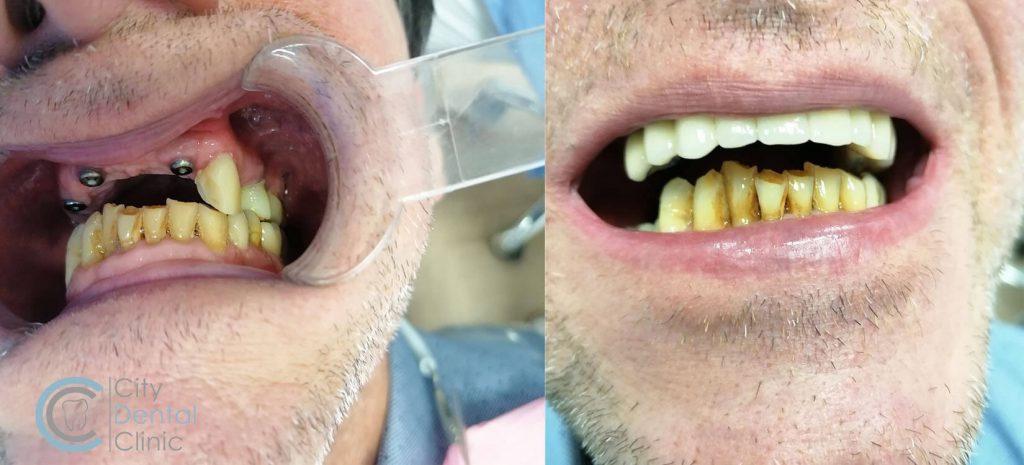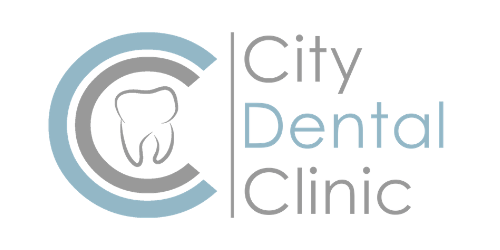All-on-4® dental implants
As people start aging, several dental problems arise, the most common one being tooth loss. But with advances in dental technology, getting an implant has become much easier than it used to be. With these newer implants taking on the market by a storm, traditional dentures are gradually becoming a thing of the past. Interested in knowing more about the all-on-4 dental implant solution? Then read on to find out.
What are All-on-4® dental implants?
All-on-4® dental implants provide a great long-term option to replace and reconstruct missing teeth, if a patient has lost all or the majority of his or her teeth in one or both jaws. Due to the strategic placement of each implant in terms of distance, angle and depth, an All-on-4® structure can support a whole arch of new teeth, using only four implants. In most cases in which a patient undergoes an All-on-4® treatment, the oral surgeon is able to implement all required implants in one sitting. The name “all-on” is used to describe this type of procedure due to the fact that the complete denture is attached to and supported by either 4 or 6 dental implants.
Due to the special type of denture that is prepared for an all on 4 or all on 6 solution, the patient only needs 4 or 6 dental implants instead of one implant for each tooth, which would usually require 6- 10 implants per jaw.
Before and after – All-on-4 dental implant

When are All-on-4® dental implants recommended?
The All-on-4® dental implant solution, as well as its alternatives all on 6 and all on 8, are typically recommended to patients who have lost the majority or all of their teeth in one or both jaws either due to accidents or tooth decay.
What is the difference between All-on-4® and standard implants?
All-on-4 implants differ from regular implants, because only 4 implants are used to support an entire arch, when traditionally 6-10 implants were needed to maintain a solid structural integrity of a full arch denture. The nature of their positioning in the patient’s jaw differs from regular implants, as they are placed at different angles, distances and depths in order to ensure a maximum stability. As only 4 implants are used in the all on 4 procedure is far less invasive for patients, allowing for a much faster recovery and healing time.
What is the difference between All-on-4® and All-on-6 dental implants?
As the name explains, the difference lies simply in the required number of implants for each type of treatment. In an All-on-4® treatment the surgeon places 4 implants, whereas in an All-on-6 treatment the surgeon places 6 implants into the patient’s jaw. The more implants that are used the more stable and stronger the structural integrity of the new teeth becomes, as the pressure is distributed to more implants and thus more evenly transferred onto the jaw itself.
However, it is not as easy as to say the more implants the better. One of the main requirements for dental implants in general is that the jaw needs to have enough bone structure and strength to support the implants that are to be placed. The more implants that need to be placed the more bone needs to be available. Therefore, a treatment type such as All-on-6 may require to first undertake a bone reconstruction or bone augmentation procedure. The factors that affect the available options for any given patient are: anatomical structure of the jaw, the bone density, and general health aspects such as diabetes, osteoporosis, use of alcohol and more.
So, which one is the right option for you? There is no clear-cut general answer to which type of “all on” treatment is best, as this is dependent on many individual factors and the patient’s anatomical situation. During your initial consultation with our dental surgeon, you can be sure that this question will be answered for you in detail, as you will be presented with various possible options to restore a natural looking smile for the long-term.
What are the benefits of an All-on-4® solution?
- The procedure rarely requires bone grafting
- Shorter treatment time in comparison with traditional implant solutions
- Less invasive surgery
- Fewer visits to the dental clinic required as all implants are placed in one sitting
- All-on-4® implants will restore optimum function of your mouth
- All-on-4® implants offer a fixed denture solution, say goodbye to your removable denture
- A temporary bridge can be fitted within days of your treatment after initial healing has taken place
- The final prosthesis can usually be fitted within 3-6 months, as opposed to 6-9 months in a regular dental implant treatment
What steps are involved in the All-on-4® or All-on-6 treatment technique?
Consultation & Preparation of the treatment plan
On your first visit with the dental surgeon a CT scan will be prepared in order to find out more about your current dental health situation. Based on the CT scan and a personal evaluation, the dental surgeon will be able to form an idea about which type of “all-on” procedure is possible for you. Based on the findings of the dental surgeon you will be presented with a few options on how to best replace your missing teeth. In case you have any specific questions feel free to ask as much as you need during your consultation, as this is the time to do it.
Surgical phase – Implantation
On the day of your scheduled implantation appointment, the remaining teeth will be extracted and the implants will be fitted in one sitting. In an All-on-4® treatment plan two implants will be placed in the front of your mouth and two implants will be placed at the back of your mouth.
Post surgical – fitting or temporary prosthetics
After a successful surgery, the dental surgeon will monitor your healing progress and decide whether it is time to fit the temporary prosthetics. In most cases, the temporary prosthesis can be fitted within 7 days of the placement of the implants. Before fitting a temporary solution, several tests will be undertaken by the dentist responsible for the prosthesis, in order to ensure that the implants are placed correctly and that the whole structure has a sufficient stability.
Post surgical – fitting of permanent bridge or denture
Approximately 2-6 months after the placement of the implants, your jaw should be ready to receive the final bridge or fixed denture. This time varies from patient to patient as it is highly dependent on a multiple factors. With regular check-up appointments the dentist will be able to tell exactly when the time has come for you to receive your final dental prosthesis.
Maintenance & aftercare
After you have successfully undergone all steps in the treatment it is your duty to ensure a long-life for your new dental implants and fixed denture. With regular visits to the dentist as well as to the dental hygienist you will be able maintain your new teeth in a good condition and be well informed about how to best care for your new smile.
Watch the video – All-on-4 implant
Contact us
we will contact you
